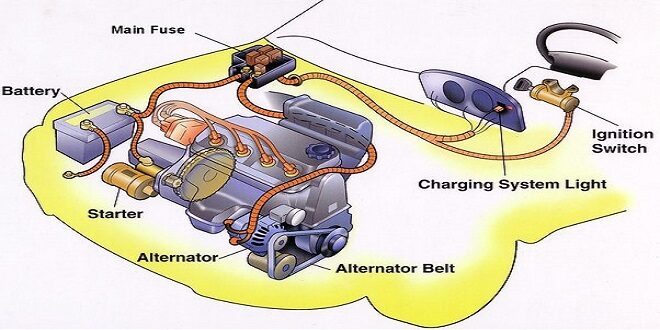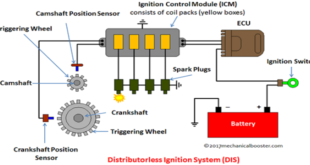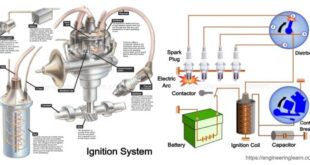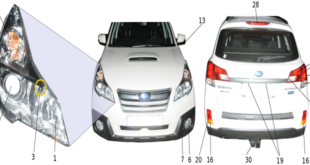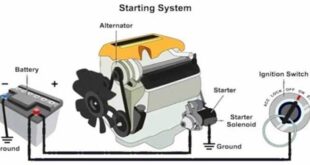Introduction
The battery used in an automobile has to be charged by the vehicle itself. A charging system is used in every vehicle. Alternator or magneto is used for this purpose. The unit describes the basic principle of Faraday’s law of electromagnetic induction. It also deals with the construction, working, and testing of an alternator. The students will be able to differentiate between an alternator and a dynamo. They will also be able to service the charging system.
Charging system
The function of the charging system in an automobile is to generate, regulate and supply the electric energy for charging the battery. The requirements of a charging system, when the vehicle is running are:
- To supply the current demands of all the loads.
- To supply the current required for charging the battery under all conditions.
- To supply constant voltage under all conditions.
- Should include a provision to indicate proper working.
- Should have the highest power to weight ratio.
- Should be reliable and quiet.
- Should require the least maintenance.
The charging system consists of a generator for converting mechanical energy from the engine into electrical energy, a regulator to control the amount of electrical energy so produced, a relay to regulate the flow of the charging current from the generator to the battery relevant to the state of charge of the battery and an ammeter or indicating lamp to indicate whether the system is operating or not. In modern cars, the charging system includes an alternator only instead of a generator.
Charging circuit diagram
A typical charging system contains an alternator (generator), drive belt, battery, voltage regulator and the associated wiring. The charging system, like the starting system, is a series circuit with the battery wired in parallel. After the engine is started and is running, the alternator takes over as the source of power and the battery then becomes part of the load on the charging system.
Principle of a generator
When a conductor is moved in a magnetic field a current is produced in it. If the magnets used are permanent, the strength of the magnetic field will be weak which leads to a weak electromagnetic force. Owing to this fact the magnets used in generators are electromagnets. A generator consists of a frame that provides room for other components, an armature winding, and a field coil.
Electromagnet
An electromagnet is a type of magnet in which the magnetic field is produced by an electric current. The magnetic field disappears when the current is turned off. Electromagnets usually consist of a large number of closely spaced turns of wire that create the magnetic field. The wire turns are often wound around a magnetic core made from a ferromagnetic or ferromagnetic material such as iron. The magnetic core concentrates the magnetic flux and thus, makes a more powerful magnet.
Alternator
In modern cars, the charging system uses an alternator instead of a dynamo. So this reference book deals with the construction and working of alternators & compares the dynamo with an alternator.
Construction & working of alternator
The alternator is an AC generator that produces alternating currents instead of DC current as produced by a generator. The automotive electrical system requires only direct current; the alternating current produced by the alternator should be converted to direct current by a diode or rectifier
Last word
In a DC generator, the output windings are in the armature which rotates, whereas in the alternator the same is on the stator. Due to this, the cooling is comparatively easy in alternators and hence there is the maximum output.
 NEWSHUNTS
NEWSHUNTS
